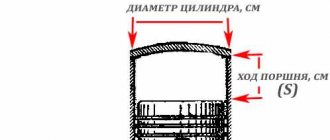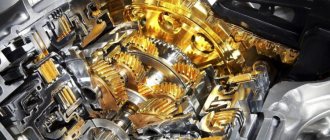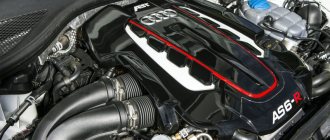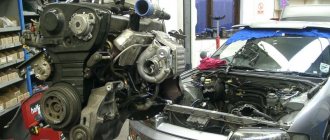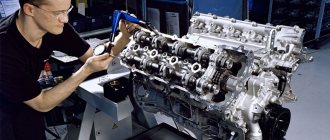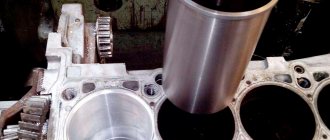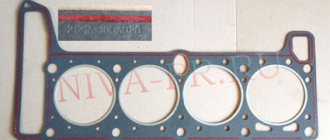The very first assembly of an internal combustion engine (ICE) dates back to 1885 and was carried out by German engineer Karl Benz. Since then, engineers have been constantly trying to improve the dynamics of engines. And the expression “engine displacement” is always heard, but not everyone knows what engine displacement is in reality and what parameters it consists of.
Engine volume is a design parameter of an internal combustion engine that determines its power.
In many countries, car taxation is determined by the displacement of their engines. For example, in Japan, owners of Kei Cars, which belong to the class of small cars and have an engine capacity of 0.66 cm cubic, do not pay road tax. In some countries around the world, tax legislation is structured so that the larger the engine displacement, the higher the road tax.
As for Russia, here the amount of road tax is determined by the number of horsepower, although these two parameters are completely interrelated. From all of the above, we can conclude that engine size is an indicator of the car’s power, as well as the solvency of its owner.
One of the promising vectors for the development of internal combustion engines design is the creation of engines with variable displacement, which is achieved by using a system for automatically shutting off several cylinders in partial engine load mode.
This technology is already used on some new American-made SUVs, thanks to which it is possible to save about 20% of the fuel mixture.
Currently, in the experimental stage, special engines with mechanical changes in the piston stroke are used. But internal combustion engines with variable displacement have already been used for some time as laboratory equipment, for example, when determining the octane number of gasoline using the “engine method”.
Engine displacement characteristics
The working volume of all types of engines is usually measured in cubic centimeters, or liters. It is according to these parameters that machines can be divided into the following categories:
- minicars (no more than 1.1 liters);
- small cars (from 1.2 to 1.7 liters);
- medium volume (from 1.8 to 3.5 liters);
- large-capacity (from 3.6 or more liters).
This division is quite arbitrary and concerns mainly engines running on gasoline. With diesel engines the situation is slightly different. The displacement indicator of power plants is one of the most important parts of a car. The more fuel mixture is placed in the combustion chamber, the more gasoline the car consumes. But along with fuel consumption, the power of the car also increases, because more fuel will produce a greater amount of released energy.
The disadvantages of large-capacity cars, in addition to fuel consumption, include their higher cost. So, it is logical to assume that much more materials will be required for its manufacture, and the requirements for the quality of manufactured parts will, accordingly, be much higher.
Features of operation of large cars
Compared to small-displacement engines, large-displacement engines are characterized by smoother operation and less noticeable wear, since they are much less likely to have to operate at the power limit. An engine with a large combustion chamber produces its maximum capabilities only when it participates in racing, i.e. in sports competitions. When driving in normal mode, the engine retains a reserve of power, so it does not wear out. Fuel consumption, of course, remains higher than that of small-displacement engines, but it can be reduced by properly adjusting the gearbox. A powerful engine, which is rarely used in hard conditions, is capable of driving up to a million kilometers without the need for major repairs. Therefore, the costs incurred when purchasing a powerful large car are subsequently recouped by the long-term operation of the car.
How to calculate engine size
Any power plant has a certain number of cylinders, and in order to calculate its total power, it is necessary to take into account the parameters of each of them.
In turn, the working volume of the cylinder is determined as the product of the cross-sectional area of the cylinder and the length of the piston stroke (from BDC to TDC).
So how do you find out the total engine volume? To do this you need to make a few simple calculations:
- For example, if a car has an inline four-cylinder engine, and the volume of each individual cylinder is 499 cubic centimeters, we should multiply this number by four.
- As a result, we will get a value that determines the displacement, in our case it is 1996, then we round it to the nearest whole value. In our case it is 2000, then we divide this value by 1000, and this means that this engine will have a volume of two liters.
What does displacement affect?
As already mentioned, the larger the cylinder volume, the more fuel it can burn in one stroke. Accordingly, its combustion energy will be higher. As a result, engine power and dynamic characteristics of the car increase.
However, we should not forget that big engines have a big appetite. So, if a one and a half liter gasoline power unit in the urban cycle consumes an average of 9-10 liters of fuel per 100 km, then a two-liter engine will require 12-13 liters of fuel. On the highway the difference is less, about 6.5-7 liters versus 8-8.5.
The reason is that while idling, a larger engine also consumes more gasoline, while while driving it allows you to accelerate the car faster to the required speed, i.e. The operating time in uneconomical mode is reduced.
The formula “more volume – more power” is true for passenger cars. Trucks take a slightly different approach. Large volume does not necessarily mean a "herd of horses" under the hood, since for these cars the more important characteristic is large torque in all crankshaft speed ranges.
Thus, the KamAZ-54115 tractor has a power unit volume of 10.85 liters (the volume of only one cylinder is comparable to the displacement of a small car engine), while its power is only 240 hp. For comparison, the BMW X5 with a three-liter diesel engine develops 218 hp. In fairness, it is worth noting that the latest generation KamAZ heavy trucks are equipped with more modern engines with a volume of 11.76 liters and a power of up to 400 hp.
The principle of operation of the internal combustion engine
Operating principle of an internal combustion engine:
- The combustion chamber of the power unit is filled with a fuel mixture (gasoline with air). The chamber is designed so that it has a movable element (piston).
- Then, using a special device called a “spark plug,” the fuel mixture ignites.
- The energy released as a result of the “explosion” pushes the piston down, which in turn transmits the movement to the crankshaft, which, through various gearboxes, begins to spin the wheels.
This is the simplest description of the operation of the engine; in fact, there are a huge number of nuances, but it also allows us to answer the question of how to find out the volume of a gasoline engine.
Now it is clear that the volume of any engine is the total value of all combustion chambers of the engine. What does this indicator affect? First of all, on the power of the car. Although modern cars are increasingly using turbocharging, which allows inventors to increase power while leaving the volume of the combustion chamber unchanged.
Fuel volume and consumption
The combustion chamber is a closed space of a cylinder, on one side of which there is a stationary block with valves, on the other there is a movable piston. A mixture of fuel and air enters the cylinder through the valves and ignites at the right moment, pushing the piston. The energy resulting from the combustion of the mixture is transferred from the piston to the crankshaft and its flywheel, then through the transmission to the wheels. ?? This happens several thousand times a minute.
It would seem logical to assume a direct relationship between fuel consumption and engine power and its volume - the more fuel-air mixture can be pumped into the cylinders, the more powerful the engine can be obtained. In the last century this was approximately the case.
Today is the age of modern technology, and it should not be surprising that some two-liter engines have lower fuel consumption than some 1.5-liter engines. Of course, the relationship between volume and flow with power remains, but this direct relationship is now influenced by many other factors.
For example, with the same volume of four cylinders, a 16-valve engine will be more powerful and more economical than an 8-valve engine due to a more optimal process of pumping the fuel-air mixture and removing exhaust gases.
In turn, an injection engine will be noticeably more powerful and more economical than a carburetor engine, because the fuel combustion processes in the injector are controlled electronically.
Also, the consumption of two engines of the same volume can vary greatly depending on the settings of the injection system, the presence of various systems that reduce engine emissions and the presence of a number of other indicators, including the type of transmission and the driving style of a particular driver.
How to increase engine size
This question is often asked by car owners who have set themselves the goal of increasing the power of their “iron friend” at any cost.
As you know, a car engine consists of several cylinders, they are located in a single block (cylinder block). There is a piston inside each cylinder. And this entire system together is called the combustion chamber and determines the displacement of the power plant.
It is quite simple to independently calculate engine volume; for this there is a formula that was described above.
As a result, how can you increase engine power yourself? Typically, there are several ways to solve this problem. It all depends on how much you want to increase the power output of the engine and of course on the size of your wallet:
- The simplest and cheapest option is simply boring the cylinder block to increase the combustion chamber. In this case, your costs will only be associated with the purchase of new pistons of larger diameter.
- A more expensive option is to replace the “original” crankshaft with a shaft with a larger crank radius. Well, since the diameter of the connecting rods will increase, you will have to change the entire piston group. After this procedure, the stroke of the pistons will increase, and, accordingly, the displacement of the power unit will become larger.
What method to use to increase the power of a car is a personal matter for everyone. But it is worth remembering that boosting the engine at home is simply unrealistic. This requires special equipment, and most importantly, highly qualified specialists. So, if you still decide to take such a step, you have a direct route to a tuning agency.
Why are modern model designations not tied to engine size?
After the active introduction of turbo engines into the market in the form of turbodiesel and turbopetrol engines, the situation has changed somewhat, both in the entry-level and middle class, and in the premium segment. Let's start with the fact that it has become more difficult to navigate by the “nameplates” on a car. Initially, many automakers developed such an alphanumeric index that clearly corresponded to the model and engine size. For example, BMW 535 (5-series with a volume of 3.5).
Today, a powerful model with a 5.0-liter naturally-aspirated engine, after installing a turbine, receives a volume of 4.4 liters, but is still designated the same as the previous one. This situation is well illustrated by the fact that the digital designation of a popular Mercedes-Benz model lost its connection to engine size. We are talking about the 63rd AMG. Under the hood of the model has long been installed not a naturally aspirated unit with a volume of 6.2 liters, but a biturbo engine with a displacement of 5.5 liters. However, the car is still called Mercedes 63 AMG.
Let us add that today you can find a highly accelerated engine with a displacement of only 1 liter. (for example, engines of the Ecoboost line on Ford models), which can be installed on a mid-size sedan or hatchback of the “C” / “D” class. The fact is that the installation of turbocharging made it possible to provide such characteristics when the efficiency, power and torque of the engine became possible to significantly increase without the need to increase the physical volume of the combustion chamber.
In other words, the naturally aspirated 1.6 has 115 hp, while the 1.0-liter Ecoboost produces a whopping 125 hp. In parallel with this, the torque of turbo engines is higher and is available from the very bottom, while naturally aspirated engines need to be turned to medium speeds to obtain acceptable dynamics.
We also recommend reading the article about what a boosted engine is. From this article you will learn about ways to increase the power of an atmospheric or turbocharged internal combustion engine.
Online calculator
Determining the volume of a cylinder using an online calculator is a method that is popular among motorists. For the calculation, you can also use a regular mathematical calculator, which allows you to determine the volume of the cylinder using the available parameters.
The volume of a cylinder can be calculated using:
- base radius and height, with the height equal to the piston stroke;
- base area and height.
But there are also more complex calculators with an expanded range of functions. They allow you to calculate not only engine volume, but also the compression ratio. For calculations, the values of the following parameters are required:
- connecting rod length;
- piston stroke;
- piston under-return;
- cylinder diameter;
- piston chamber volume;
- thickness and diameter of the gasket;
- chamber volume in the cylinder head;
- number of cylinders.
Before calculating the volume of a cylinder or the entire engine, or calculating the compression level, you should clarify and record all of the above parameters. Beginners may have difficulty with this, so they will have to be persistent.
Kilowatt to horsepower conversion calculator
Horsepower is a non-systemic unit of measurement of a power parameter. In fact, all over the world several different units are called “horsepower”. In the Russian Federation, the term “horsepower” usually means “metric” horsepower. s., which is equivalent to 735.49875 W.
Now in the Russian Federation this unit has been formally withdrawn from use, but today it is used to calculate the amounts of transport taxes, as well as compulsory motor liability insurance. The SI system long ago established the watt as its official unit.
The English system of measurement recognizes lb-ft/sec as a unit of power, but in reality this unit is no longer used in the UK, and is used extremely rarely in the USA.
Other methods
There are several more secrets that help increase horsepower in a car. These include:
- reducing the friction force of the piston on the cylinder walls through the use of special additives;
- installation of a lightweight flywheel;
- replacing the turbocharger with a more powerful one.
Horsepower is one of the most important criteria for an owner or potential buyer.
To calculate engine power, a parameter called horsepower is used. Every person close to the automotive industry knows that this parameter must be indicated in the vehicle documents. However, power is not always determined by horsepower.
So, motor power can be measured in kilowatts per hour. To get accurate calculations you will need to know a few things.
- vehicle;
- TO station.
To clearly understand the process of measuring car engine power, below is a sequential algorithm of steps that allows you to quickly understand the process of interest. Procedure:
- For such a calculation, obtaining data regarding engine power uses a domestic or European measurement system. Both systems equate one horsepower to 75 kg x m/s (one horsepower equates to a 75 kg weight lifted to a height of 1 m in 1 second);
- Similarly, horsepower can be converted to kilowatts: 1 horsepower = 0.735.5 kW (735 W);
- In order to find out the power parameter of the machine, you will need to convert the indicated figures according to the equations indicated above. If the car’s power is indicated in kW, then to determine the number of horsepower, the value indicated in the car’s passport must be divided by 0.735;
- To more easily find out the number of “horses” of your car’s engine, you should go to a nearby service station (service station), where, as a rule, there is a specialized computer installation designed to determine this parameter;
- If you don’t know how to check, you can use the advice of service station specialists. The car is placed on a special installation platform, after which the gas pedal is pressed all the way. While operating the car in such conditions, the computer will process all the parameters of the car, and then provide results and an estimate of engine power, based on the collected data.
Interesting to know! In 1789 in Scotland, James Watt was the first to use the concept of “horsepower” to determine the power of a car engine. This is how, using the knowledge gained in high school mathematics lessons, and also spending a little time, you can determine an important parameter of your vehicle - engine power.
The concept of “car horsepower” was introduced in the 18th century by James Watt. This is a parameter that shows the power of a car compared to the power of a horse.
Calculation of weight and acceleration time from zero to hundreds
You can also determine how engine power is measured by the total weight of the car and the time it takes to accelerate to 100 kilometers per hour. Unfortunately, this method has one major drawback - the final formula is quite complex and it can vary greatly depending on the technical features of the car (type of drive, nature of the transmission, and so on).
Therefore, we recommend that you calculate power by weight and acceleration time not manually, but using a ready-made calculator on our website.
Optimal algorithm of actions:
- Accelerate your car from 0 to 100 kilometers per hour. Determine the acceleration time in any convenient way (usually this is done using the on-board computer).
- Find out the weight of your car - you can do this using the same on-board computer, using technical documentation, and so on.
- Use our calculator - enter the mass and acceleration time, select the drive type, specify the transmission.
